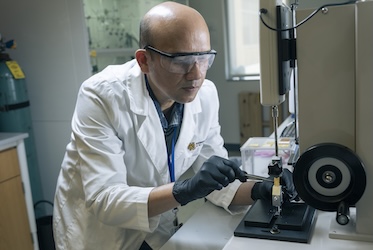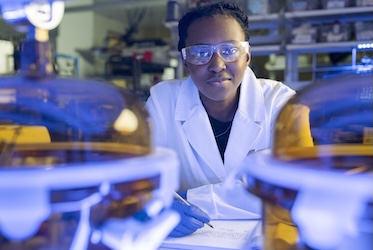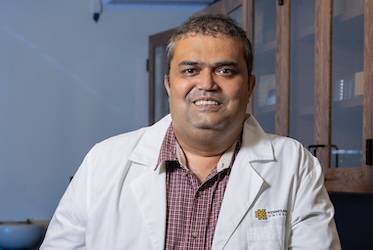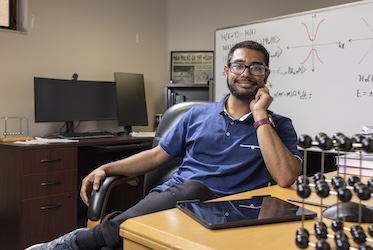
Kennesaw State researcher finds parent starlings more adaptable at protecting baby birds
KENNESAW, Ga. | May 4, 2022
Researchers exploring behavior patterns of superb starlings, a bird species commonly found in East Africa, discovered that when it comes to protecting their young against predators, it takes a village.

Starlings live in large complex groups composed of related and unrelated members, much like a village or community. There are parents and helpers, some having no relationship and others who are genetically related, such as siblings. Together, parents and helpers watch over the nest carefully to scare away possible predators; the study finds that having more guards nearby can greatly improve the chance that the young chicks inside the nest survive.
“Cooperation can help animals and humans overcome challenges. You might expect all to come together and help when times are tough, but based on our data, we found that parents adjust their behaviors to rainfall by providing more care for their chicks when times are good. While parents appear to watch for changes in rainfall to decide how they should behave, other individuals within the flock seem to ignore rainfall; they’re more consistent in their cooperative behaviors and in protecting nests from predators,” said Guindre-Parker. “One possible explanation for this result is that birds who are genetically related may ‘step up’ to a greater extent.”
The paper was co-authored by Columbia University professor Dustin Rubinstein and Jasmine Little, a 2021 graduate of Kennesaw State.
Guindre-Parker credited Little with the majority of the research, which involved analyzing several years’ worth of data. Little presented initial data findings on superb starlings in spring 2020 at Kennesaw State’s Symposium of Student Scholars. She graduated in summer 2021 with a bachelor’s in environmental science and a minor in applied statistics and data analysis.
Guindre-Parker said it’s unusual for an undergraduate to co-author a paper at all, let alone one of this magnitude in such a prestigious journal. Little taught herself to program analyses in a program called “R,” which Guindre-Parker said was crucial to the study.
“Jasmine came in with a really strong background in statistics, and she wanted to merge that skillset with biology,” Guindre-Parker said. “She approached me her junior year about wanting to do animal behavior research, which she did for two years, and it became a big project for us.”
Guindre-Parker said this research could continue and that she hopes another student might pick it up to continue with data analyses on starling behavior.
Guindre-Parker joined the faculty in the College of Science and Mathematics at Kennesaw State in 2019. In addition to her work on starlings in Africa, which she started during her doctoral studies at Columbia, she currently studies European starlings with nesting sites in rural and urban settings around the Atlanta metro area.
– Dave Shelles
Related Stories

Kennesaw State researcher tackling sustainability through use of transparent wood

Chemistry student engaged in sustainable catalyst research through Kennesaw State's First-Year Scholars program

Kennesaw State researchers awarded Department of Energy grant to investigate materials that boost energy-efficient technologies

Kennesaw State physics student awarded Goldwater Scholarship
A leader in innovative teaching and learning, Kennesaw State University offers undergraduate, graduate, and doctoral degrees to its more than 47,000 students. Kennesaw State is a member of the University System of Georgia with 11 academic colleges. The university’s vibrant campus culture, diverse population, strong global ties, and entrepreneurial spirit draw students from throughout the country and the world. Kennesaw State is a Carnegie-designated doctoral research institution (R2), placing it among an elite group of only 8 percent of U.S. colleges and universities with an R1 or R2 status. For more information, visit kennesaw.edu.














